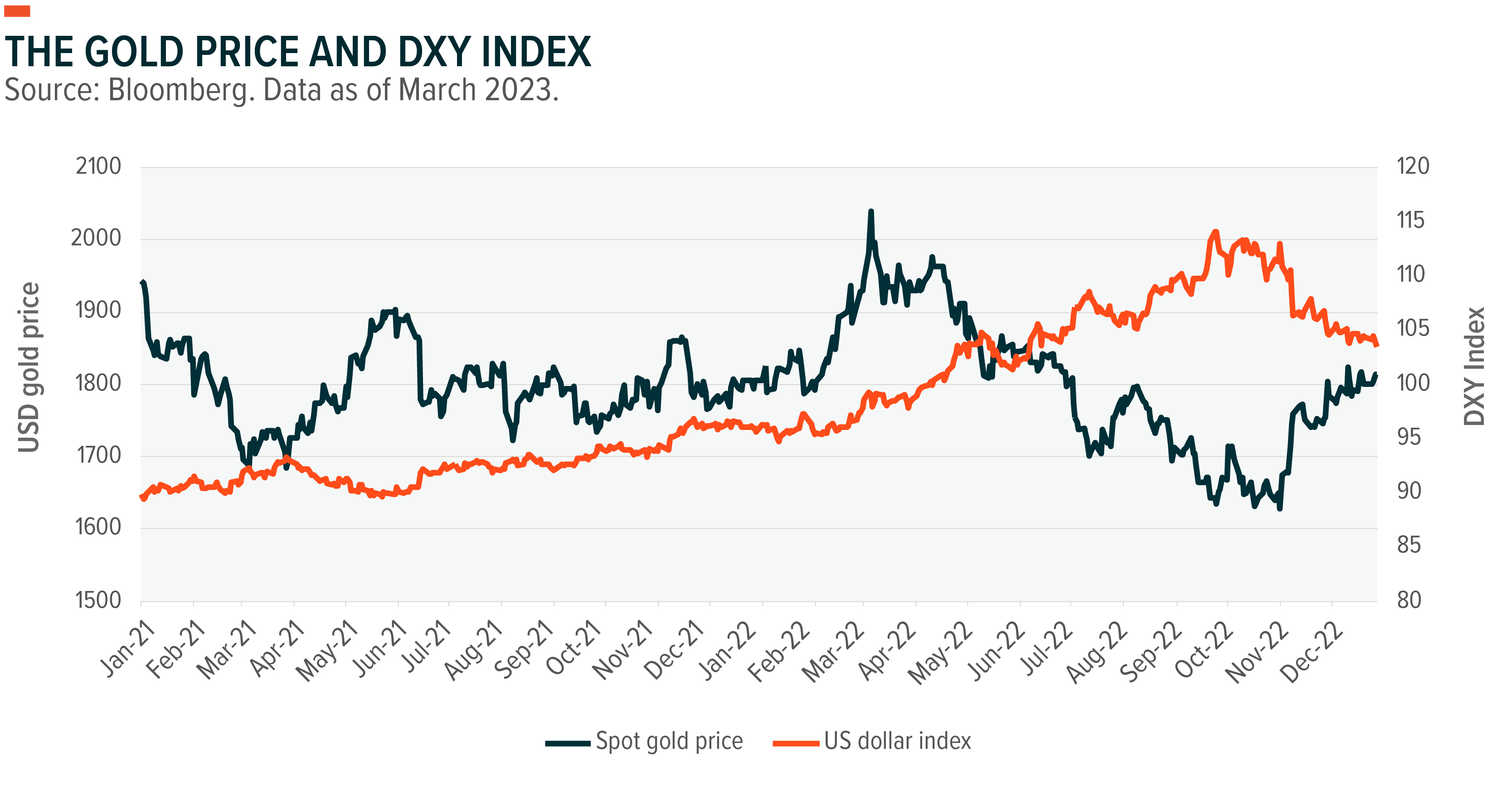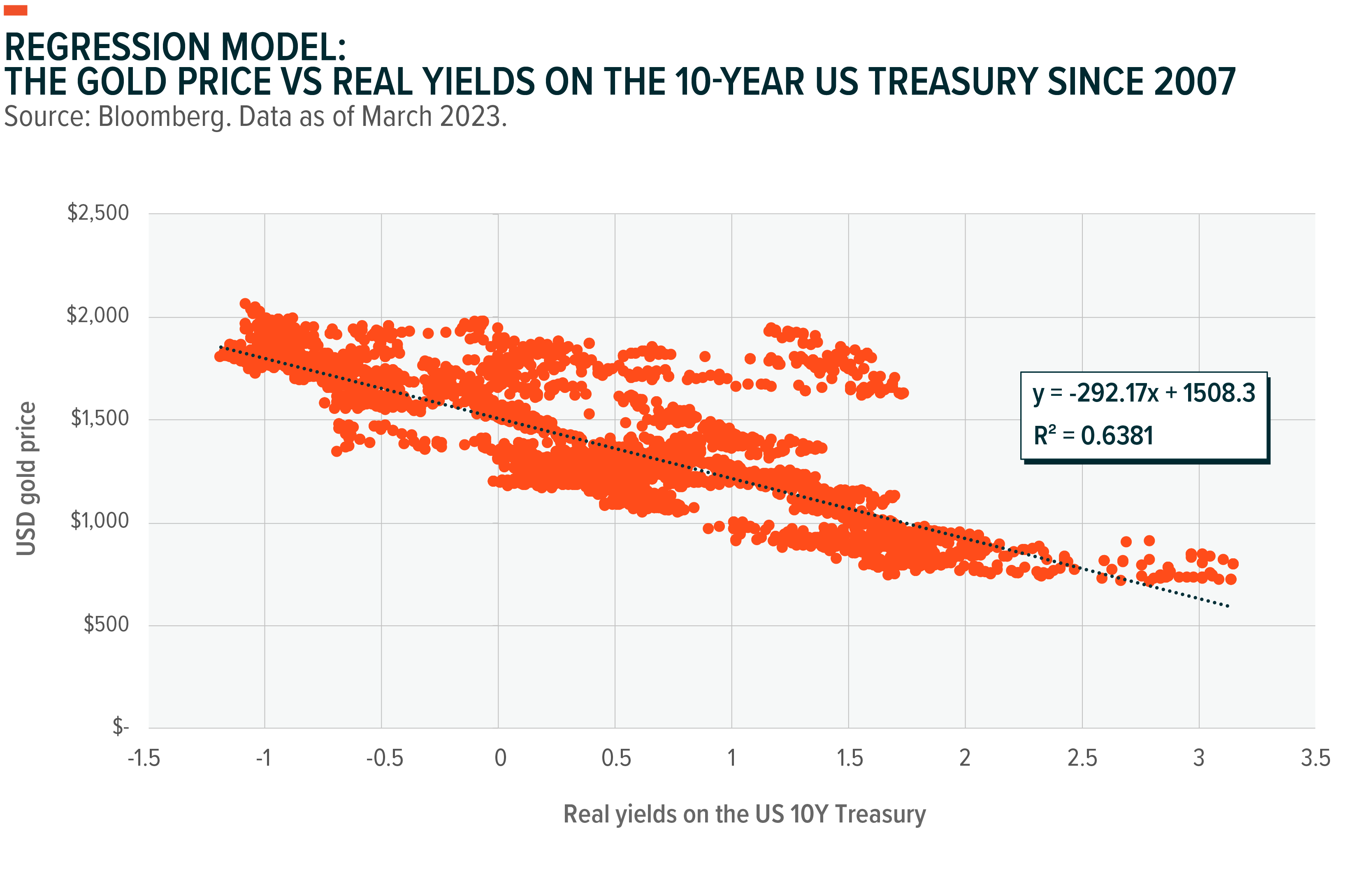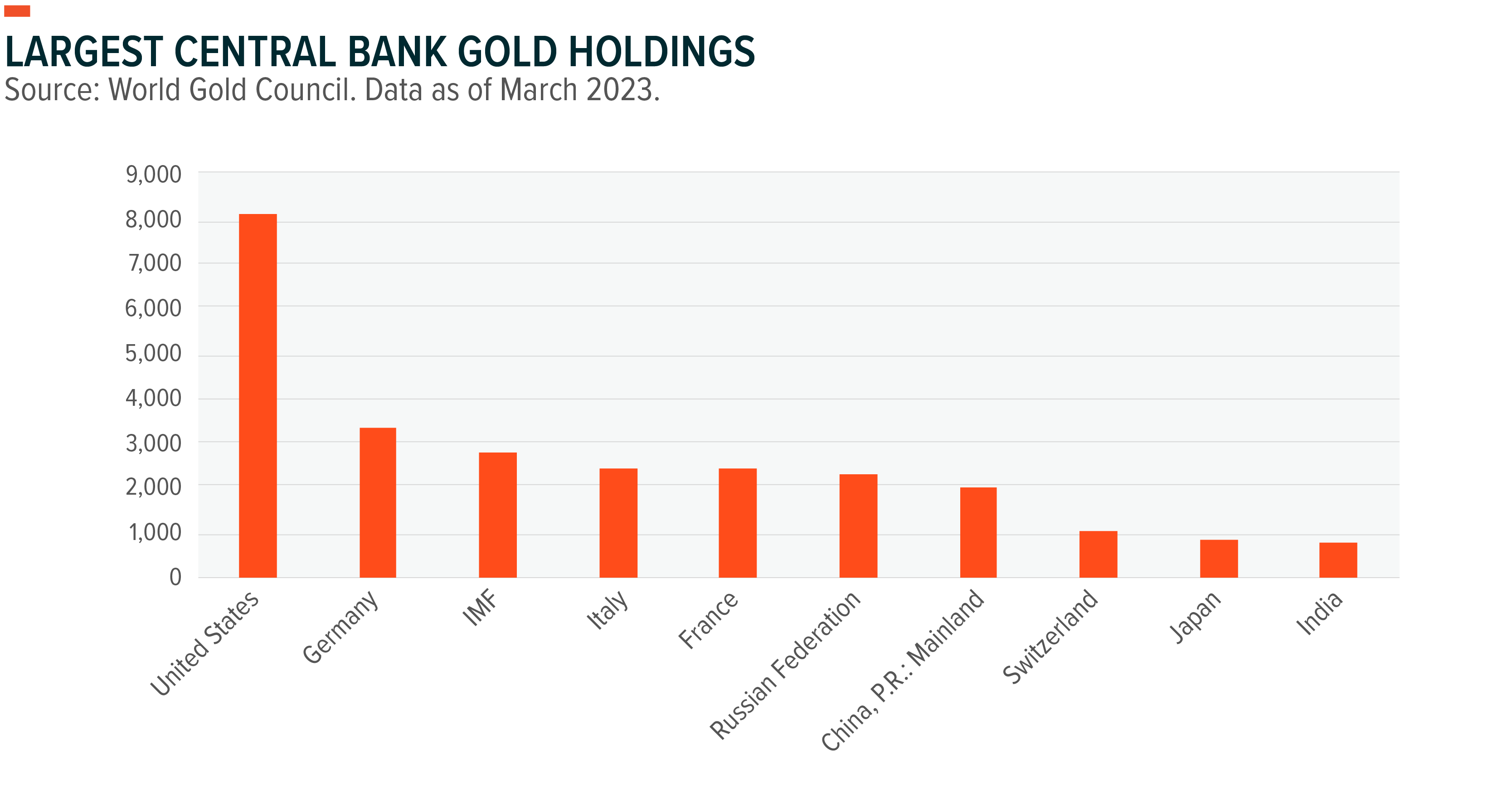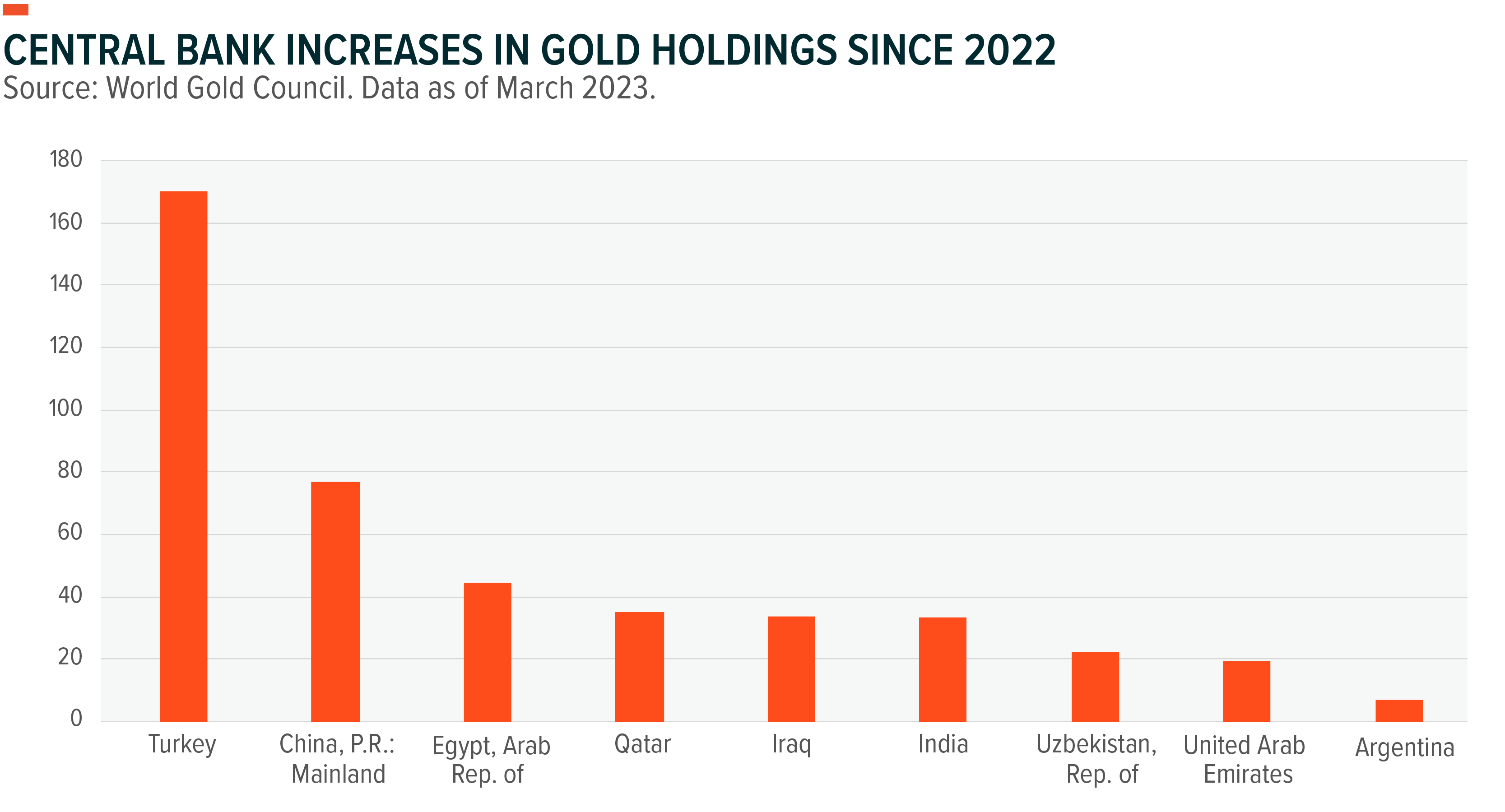The three reasons behind the gold rally

Global X ETFs
With the gold price nearing all-time highs at a moment when shares and bonds are struggling, many investors are wondering what’s going on. Why is gold doing so well? And why is it thundering higher in straitened times like these?
.png)
To answer the questions directly, there are three main drivers of the gold rally at the moment. They are:
- A weakening US dollar
- Expectations of lower US interest rates
- Strong gold buying from central banks
Reason #1 – A weakening US dollar
Gold, like other commodities, trades primarily in US dollars. The most influential gold trading venues in the world – the LBMA in London, COMEX in New York – trade gold exclusively in US dollars.
Despite most gold trading in US dollars, the US
only accounts for a minority of gold purchases. Instead, China and India are
the biggest gold-buying nations. This means that when the US dollar falls, it
becomes easier for people outside the US to buy gold. This can then translate
into greater gold buying, which supports prices.

We can see the effect of the US dollar on the gold price by looking at the correlation (relationship) between the US dollar index (called DXY, which measures a basket of global currencies against the US dollar) and the spot price of gold. And specifically, looking at how this changed throughout the year as the gold price moved. In the first half of 2022, during which the gold price traded sideways, the correlation was basically zero, indicating no relationship. But in the second half of 2022, during which gold rallied, the correlation fell to -0.59, indicating that a weakening US dollar largely explained the rising gold price.

Reason #2 – Expectations of lower real interest rates
Gold, like other assets, is directly impacted by prevailing interest rates. And gold, as a general rule, does best when real interest rates (which include the impact of inflation) are low – or even negative.
Why? Because gold pays no income. As such, it can be most appealing when cash and bonds – gold’s primary competitors for “safe haven” asset status – pay no real income either.
Regression model gold vs UST 10-year real yields since 2007

Due to this property, a lot of investors think of gold as an inflation hedge of sorts. When high inflation and low central bank interest rates work together to ensure cash and bonds have little income to offer, gold tends to shine.
As of late-January, the market continues to expect the Federal Reserve will cool its interest rate hikes. According to futures markets, traders expect the Fed will lower interest rates in the second half of the year. As such, investors foresee a scenario where inflation runs ahead of interest rates. (Thereby lowering real yields). This too has helped support gold prices.
Reason #3 – Greater central bank buying
Conventional wisdom says that central banks ended their marriage with gold with the collapse of the gold standard in 1971. The Reserve Bank of Australia, which sits on almost $7 billion worth of gold in London, has not added an ounce since.
However, the reality is more complicated. Many central banks around the world continue to add gold to their stockpiles even today. According to interviews with central bankers conducted by the World Gold Council (WGC), the primary reason global central banks continue buying gold is diversification. (Central banks, like most investors, like to diversify their asset base).

The role of central banks in the gold market came into relief in a big way in October and November. The People’s Bank of China (PBoC) took advantage of lower gold prices in these months to buy record amounts of gold. As of November, roughly 3.8% of PBoC’s total reserves are held in gold according to the WGC.

Meanwhile, the Bank of Russia has reportedly been buying gold in record volumes—without reporting its gold holdings to the IMF, as is standard. (Hence there is no Russian gold buying in the graph above). Russia is potentially doing this to support its gold mining and refining industries, which have been frozen out of international trade. (South Africa did something similar during Apartheid, when its gold industry was frozen out of global trade). This gold buying from Russia and China meant that central banks bought more gold in the third quarter of 2022 than in any other quarter in the 55 years. This too has helped power a rally.
What does the future hold?
When the gold price reapproached all-time highs in early-2022, as the world moved on from COVID, many investors feared that the experience of 2012-2013 would repeat. In those years, gold slid from US$1,750 an ounce down to almost US$1,050 an ounce, as the world moved on from the Eurozone crisis and the GFC. It did not fully recover from this slump until 2019.
However, while history rhymes, it never repeats exactly. And gold has a long history indeed. If real interest rates continue falling, and the US dollar continues weakening, there could be life in the gold rally yet.
Global X ETFs are the issuers of the Global X Physical Gold (ASX: GOLD). You can find out more here:
Beyond Ordinary ETFs
For more than a decade, our mission has been empowering investors with unexplored and intelligent solutions
To learn more about what Global X ETFs can do for your portfolio please visit our website.
